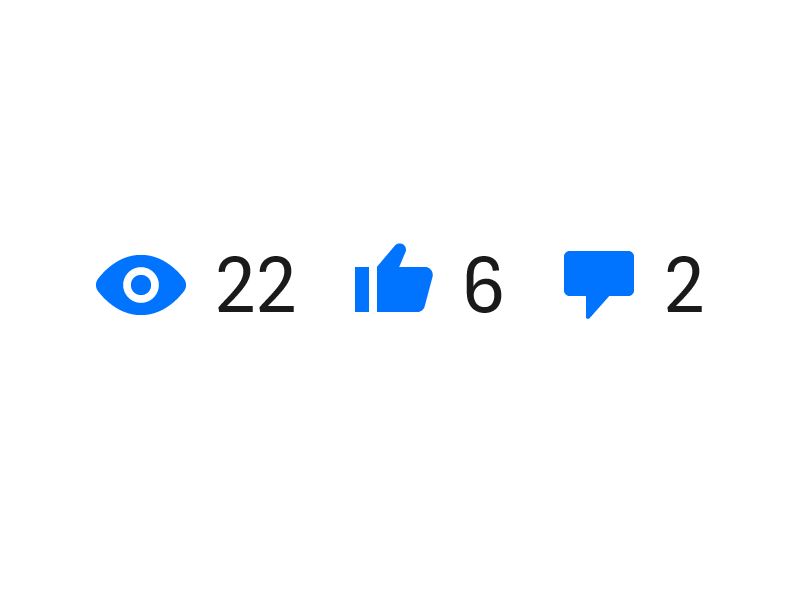The estimated reading time for this post is 13 Minutes
Legalization of Marijuana
Throughout the years, marijuana is more common among high school students. In 1999, only twelve percent of high schoolers were found to use ow, over fifty percent are found to use marijuana daily. Even, one in every six students who start using marijuana are more likely to become addicted. Since the rate of use among teens has increase over the years, the rate of crime in teens has become an issue as well. As the rate of marijuana use rises, so does the crime rates in states, some consist of drug trafficking, trespassing, theft, and could lead to assaults because of these. Marijuana, a psychoactive drug , is used for medical and recreation purposes. However, tetrahydrocannabinol called THC is the chemical which creates the high effect people want, causing them to become addicted.
Medical Marijuana virus Recreational Marijuana
Medical marijuana legalization is determined in certain states. The Drug Policy Alliance is committed to legalizing marijuana at the state and federal levels and improving medical marijuana programs to better protect patients’ rights and access to medicine. For those ill, medical marijuana is the only medicine that relieves their pain and suffering. Medical marijuana also helps their illnesses without many side effects.
While some states have medical marijuana legalized, some states have both medical and recreational marijuana legalized. Recreational marijuana is the use of marijuana without the need of a medical card. Although it might be legal without a car, there are a few laws such as the age to use marijuana legal being 21.
Marijuana and the effects among teens
Marijuana is the most common drug used by minors in the United States. According to the Monitoring the Future survey in 2008, 15 percent of eighth graders have used marijuana, while 30 percent of tenth graders and 50 percent of twelfth graders have attempted marijuana.
Drug abuse by teens has become a serious problem in the United States. Since 1999, the rates of teens using marijuana has grown significant. According to FBI statistics, more than 1.9 million teens have been arrested for drug abuse (juvenile drug abuse Gale, 1). This is causes from drug trafficking which has surprisingly declined due to the fact it is not seen often. Although, the arrest rates for drug possession continues to rise. Reducing this rate of drug abuse among teens is a top government priority.
Addiction is a growing rate that has been acknowledged as an issue for teens. Addiction becomes a problem because “drugs flood the brain with high levels of chemicals associated with pleasure or euphoria, particularly dopamine” (juvenile drug abuse Gale, 1). Euphoria and pleasure teens are attracted to in marijuana. Euphoria is a high that comes from THC. Euphoria is an unrealistic feeling of emotions and physical being. Teens crave this because it gets them away from reality for a short period. Although, those who are used to this and have been using awhile can take control of this feeling and cause them to become addicted. Dopamine, a neurotransmitter, that is responsible for transmitting signals to the brain nerves. Only a few neurons make dopamine causing those who use marijuana are exposed to a higher risk of depression, lack of sleep or too much sleep, mood change, memory dysfunction, and attention loss.
Since the brain doesn’t fully mature until the later twenties, teenagers are vulnerable to addiction (juvenile drug abuse Gale, 2). Being since a teens brain is craving new experiences, this strongly affects them. Health specialist believe that addiction is much more likely to occur when drug abuse starts early. When you use drugs, such as marijuana, the high is more intense and much more addictive. The longer teens wait for the experience of drugs, the less addictive they could become.
According to the Office of National Drug Control Policy, long term use of marijuana can increase the risk of lung cancer and other diseases associated with tobacco smoking. Marijuana use is also dangerous for short term memory, contributing problems with academic achievements, and can lead to physical addiction. In addition, Marijuana use can lead to more addictive drugs causing harm to teens.
Marijuana effects among adults
Marijuana isn’t just a drug common for teens, Adults are also attracted to the drug. As of today, twelve states are fully legalized, nine states are medical and decriminalized, eleven states are for medical use only, three states are decriminalized only, and sixteen states are fully illegal. While in 2016, 58 percent of adults surveyed that marijuana use should be legal, doubling the rate since 1995.
According to the National Survey of Drug Use and Health, between 2002 and 2014 the rate of adults between the age of fifty and sixty-four increased from 3 percent to 9 percent. Among adults sixty- five and older increased from .2 percent to 2 percent. Younger adults are also increasing, from 2014 survey ages between thirty-five and forty-nine their percent was 11.6. From the age twenty-six and thirty-four, adults averaged 20 percent. While not surprising ages eighteen to twenty-five had the highest percent with 32 percent. Overall of course the younger adults will have the higher rates, although they began to climb up the age scale.
Two out of three older adults have multiple chronic health conditions such as, hearing impairment, slowed reaction time, cognitive decline, vision changes, and balance changes. Along with these changes older adults have arthritis, cardiovascular disease, diabetes, osteoporosis and more likely to have cancer. A rising number of older adults are shown to turn to marijuana for medical and recreation purposes (Cannabis use by older adults, 1). Marijuana contains, carbon monoxide and tar having the same effect as tobacco users. This is linked to airway injury and chronic bronchitis for older adults. Marijuana intakes also cause an increase in heart rate with a lesser increase in cardiac output and weaken one’s blood pressure.
According to Mayo clinic, marijuana may interfere with several prescriptions commonly prescribed to older adults. Marijuana affects the “liver’s cytochrome P450 enzyme system”, which determines how certain drugs and supplements are supposed to function (Cannabis use by older adults, 1). Common over the counter pain killers commonly used by older adults put them at further risk of bleeding when taking them. Along with blood thinning, marijuana may affect blood sugar levels as well. It may be necessary to adjust dose amounts of certain medication for those who had diabetes. Blood pressure is also affected by the intake of marijuana for older adults causing them to take caution with their supplements and prescriptions while obtaining marijuana.
Memory loss is a major factor among older adults. Just as in teens and younger adults, older adults are shown an increase when taken. For older adults that already are affected by age related cognitive decline, marijuana can “interfere with optimal adherence to medication regimens, influence of the risk of accidents in the home, or affect decision making around driving under the influence”, causing marijuana intakes more hazardous within older adults (Cannabis use by older adults, 3).
Comparisons of Marijuana with Other Drugs
Marijuana is classified as a schedule I substance under the Controlled Substances Act od 1970, along with Heroin, LSD, and Ecstasy. A schedule I substance is declared as a highly addictive drug. From physical harm, risk of dependency, and social coast heroin is the number one drug on this list last being marijuana. In the UK they claim the ABC system, although the system does not give specific information about the drug risks. Class A is considered they’re most harmful category. This category includes heroin, LSD, crystal meth, cocaine, ecstasy, along with magic mushrooms. Class A/B contains amphetamines, while class C contains Marijuana and ketamine.
According to Medical News Today, in 2010 Lee Huizenga states marijuana is .99/3 for Physical harm, meaning acute, chronic, and intravenous. Risk of dependency is a /3, described as pleasure, physical dependence, and psychological dependence. Finally, marijuana is 1.5/3 in social costs, for health care coasts, social harm, and intoxication.
Economic Effects
A main topic of debate in marijuana legalizations is the effect of marijuana prohibition with the budgets of the government. Prohibition includes direct enforcement coast. Meaning, if marijuana became legal in multiple states, the enforcement cost will become zero, and the government could impose taxes of the production and sale of marijuana. This would cause the government disbursement to decline, and the tax revenue would increase. This would also cause a net saving in resources as well. This could be a positive thing, because these funds could be used for something else.
In a legalized marijuana state, all crime and other penalties against “production, distribution, sale, and possession would cease.” (Jeffrey, 6). The policy could impose marijuana regulations and taxes, just like we see with alcohol and tobacco today. Now, marijuana would be produced and distributed in a legal market, unlike before how it would be driven “underground”.
Marijuana policy would change dramatically from today in New Mexico. The government would save on resources that they devote to arresting, prosecuting, and incarcerating marijuana holders. Once again, with this we would have the ability to use this towards other resources we could not afford before. The production would have tax rates applied just like alcohol and tobacco, although the rate may be higher due to the demand of the product.
The Miron research in 2006 shows that marijuana legalization would reduce government disbursement by $8 billion annually. Approximately $5.5 billion of this would come from decreased state and local disbursement, while $2.5 would come from federal disbursement. At the state and local levels, the reduction of disbursement consists of $1.8 billion less spent on police. Roughly about $3.2 billion spent less on prosecutions, while another half billion less on incarcerations. Marijuana legalization would generate tax revenue of approximately $2.4 billion annually of marijuana were taxed the same rate as other goods. If marijuana were taxed the same as tobacco and alcohol, states would gain $6.2 billion annually.
However, tax rates could be higher for marijuana than other goods. Although, it is very critical that these rates aren’t too high that marijuana markets return “underground”. The revenue goal for legalized marijuana market should be moderate, meaning no more expensive than alcohol or tobacco. High tax rates have many of the same negatives as prohibition, such as penalizing marijuana revenues, or justifying legation by its high tax rates.
Under prohibition no taxations happen, although consumer pay higher prices to producers. The distributional consequence of legalization is to redistribute wealth from people who choose to violate the law, such as producing, distributing, and buying under prohibition. One aspect of legalization highlights the increase in tax revenues claim that “underground” marijuana distribution would remain underground even if legalized. For example, when alcohol was under prohibition then legalized, the demand increased. Commercial production is more efficient, and people want a long-term reliable supplier.
Prohibition does not eliminate the marijuana trafficking, but instead prohibition creates a underground market. Prohibition affects the demand for marijuana in several ways. Prohibition may reduce the demand if some users obey the law. The evidence suggests no major impact given that penalties are rarely Implied and should be held to a higher standard. The penalties for marijuana purchase or possession might reduce the demand by raising the price of marijuana use.
Prohibition also affects the supply of marijuana. This is because the underground production suppliers operate in “secret” and attempt to avoid detection by law enforcement. They face a higher increase costs of production and trafficking. Operating underground, suppliers have low marginal costs of evading tax laws and regulatory policies, offsetting the increased cost of operating secretly. The underground and legal stores and differences between their ambiguous interfaces for supply costs under prohibition various legalization.
Prohibition reduces the rate of marijuana use since the direct effects of both supply and demand suggest a different outcome. Counties with weakly virus strongly imposed prohibition have little evidence of higher marijuana usage in the weak enforced counties. This shows evidence does not rule out the possibility that marijuana use might increase under legalization, although we have no evidence to prove this. Overall, the reduction of marijuana consumption caused by prohibition is a cost rather than a benefit.
The government spending utilized in the attempt to enforce marijuana prohibition is an unambiguous cost of prohibition relative to legalization. Prohibition has a host of unintended negative effects that should receive at least as much reducing the marijuana policy. Prohibition reduces who can and cannot use marijuana with attempt to harm as little as possible, weather they use for medical or recreational. This is very critical for the effect of marijuana legalization.
Collecting reliable information on taxable activity is essential to curbing tax evasion. Stopping distributors from evading marijuana tax, states must gather the distributors incentives to pay. Thousands of suppliers now compete in the marijuana market, while the fereal ban will consolidate legalization of marijuana.
Crime Rate
The medical marijuana laws can lead to long term increases in crime as it could continue to grow. Even if the medical marijuana laws maintain the same rate or decrease of usage, the laws could stimulate crime as newly opened medical dispensaries provide criminals with high quality marijuana, with customers carrying large amounts of cash. Numerous studies have examined relationships between marijuana use and crimes. They compare the amount of crimes committed by juveniles whose urine tested positive for marijuana while whose who have tested negative for marijuana while entering the detention center. They have found a significant crime committed from those positive from those negative.
A similar research shows a frequent marijuana use frequent marijuana use among teens, being a strong predictor of intimate partner violence. These results revealed a constant marijuana use among teens increasing 108 percent increase, while 85 percent of that being and increase of intimate partner violence. Other studies show no evidence that marijuana use was related to an increase in later non- drug arrest, such as arrests for violent crimes. Studiers argue that the association between marijuana use and crime appear to exist because its illegal. Thus meaning, if marijuana was legal the relationship between marijuana and crime would disappear.
It is also argued that medical marijuana laws increase the rate of crime to happen. This is because the dispensaries and grow houses provide an opportunity for property crime, violent crim to occur, such as robbery. Additional research has shown that medical marijuana dispensaries may reduce crime within the immediate the area around the dispensaries. This may be caused by the amount of security and precautions they must take. Marijuana is used for recreational and medical purposes, increasing the rate of usage every year. Marijuana is a highly addictive drug attracted by teens more and more, younger and younger. As the rate of new users and common users begins to grow the rates of crime also began to climb the scale. As marijuana is continued to be debated within our country, make sure you obey the laws, and they will do good to you.
#heathcare #medical #medicalcare #pharmaceuticals #healthcareprofessional #nurses #healthprofessionals






